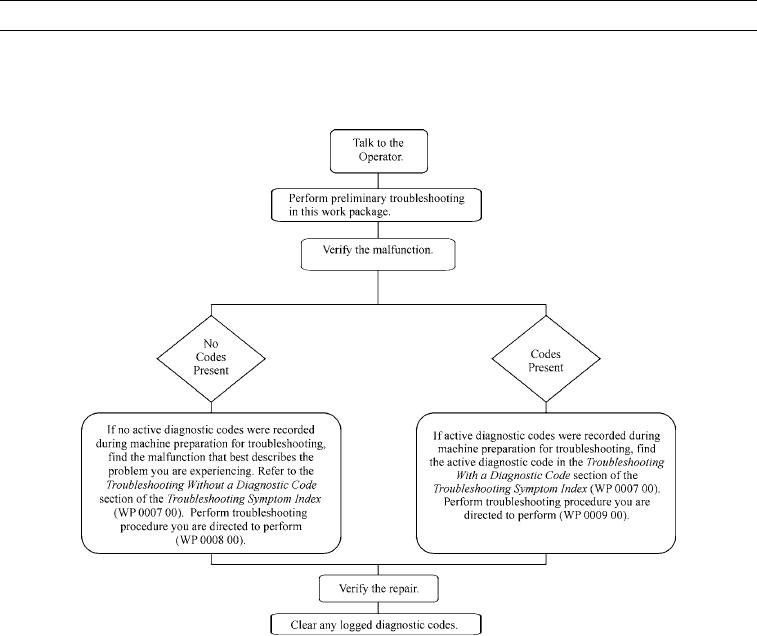
TM 5-3805-291-23-1
TROUBLESHOOTING INTRODUCTION - CONTINUED
0004 00
TROUBLESHOOTING FLOW CHART
0004 00
Use the General Troubleshooting Flow Chart in this work package to start troubleshooting.
427-C1868
PRELIMINARY TROUBLESHOOTING PROCEDURES
0004 00
N OT E
Fluid leaks are classified as either Class I, Class II, or Class III.
Class I:
Seepage of fluid (as indicated by wetness or discoloration) not great enough to form drops.
Class II: Leakage of fluid great enough to form drops, but not enough to cause drops to drip from item being
checked/inspected.
Class III: Leakage of fluid great enough to form drops that fall from item being checked/inspected.
1.
Visually check for ruptured fluid hoses or tubes and for Class II or Class III leaks.
2.
Check for mechanical jamming or binding caused by rocks or other foreign matter.
3.
Check fluid levels in subject area and service as required (TM 5-3805-291-10).
4.
Ensure all applicable Operator Troubleshooting procedures have been performed before proceeding (TM 5-3805-291-
10).
0004 00-2

